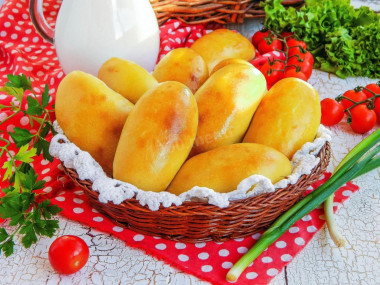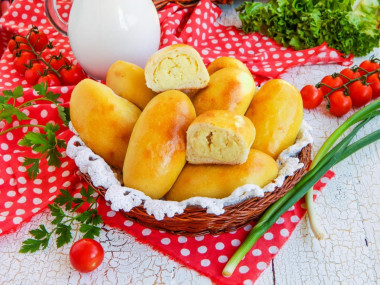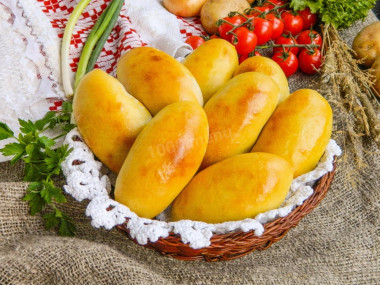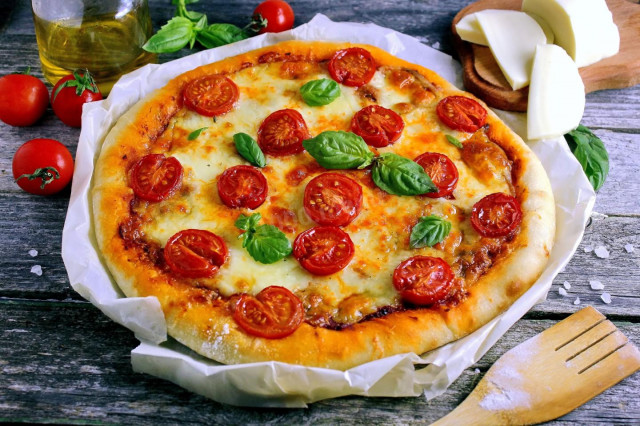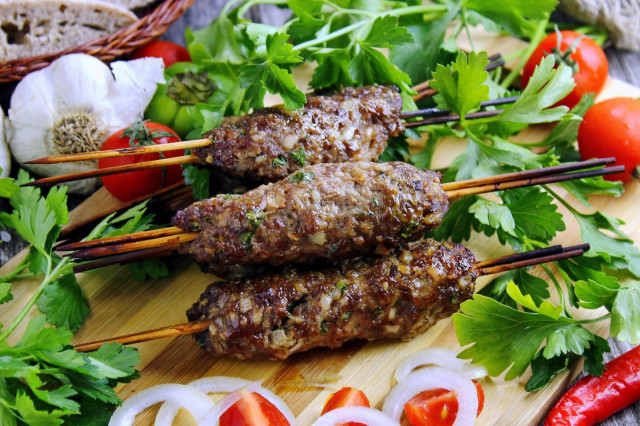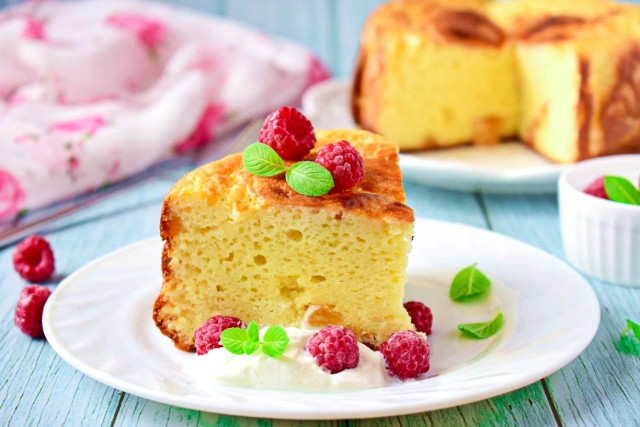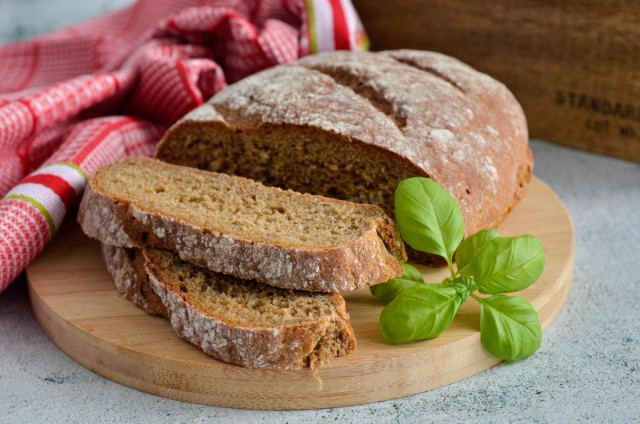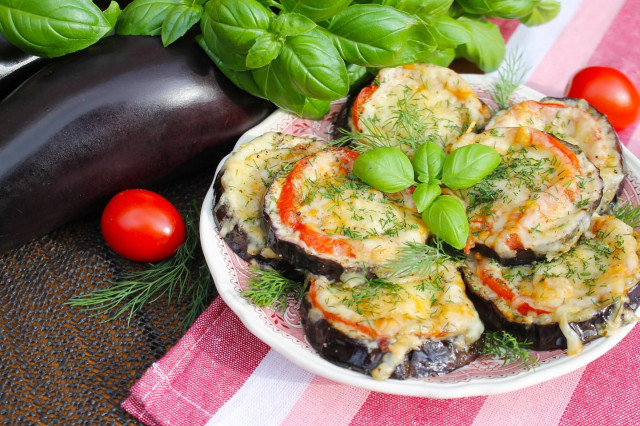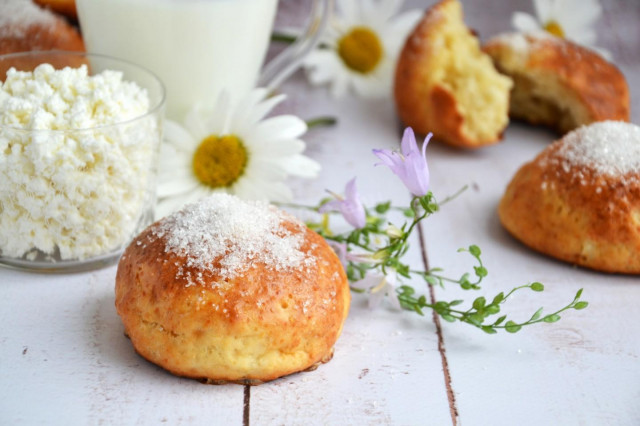Composition / ingredients
Step-by-step cooking
Step 1:
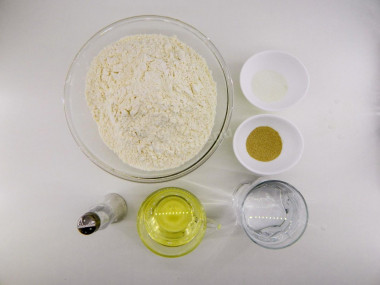
How to make pies in the oven with potatoes? Start by making the dough. Use flour of the highest grade. Take any refined oil.
Step 2:
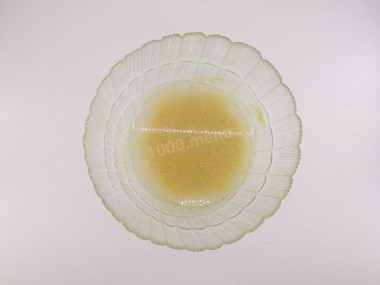
Heat the water to a temperature of 37-40 degrees. Dissolve the sugar in it and add yeast. If there is no cooking thermometer, determine the temperature in the following way: drop a drop of water on the inside of your wrist. If the feeling is neutral, then the temperature is correct. Leave in a warm place for 5-15 minutes to activate the yeast.
Step 3:
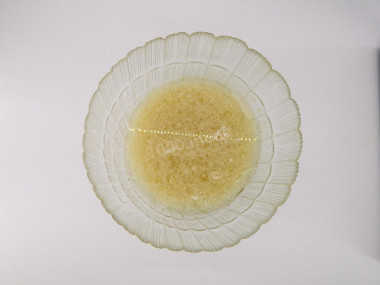
Add salt and 2/3 vegetable oil to the dough. The remaining oil is useful for greasing hands and bowls (step 6). Stir well until the salt dissolves.
Step 4:
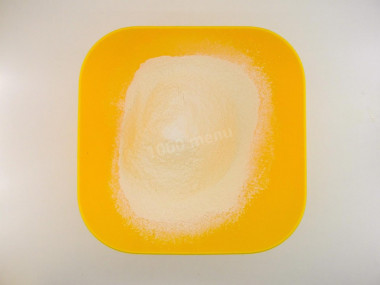
Sift the flour. This is necessary to remove small debris, if there is one, and saturate the dough with oxygen so that it rises well.
Step 5:
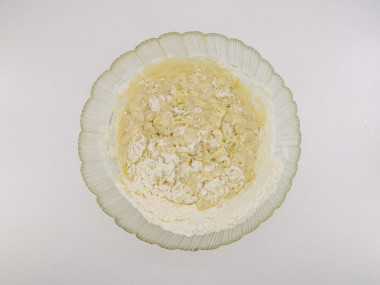
Add half of the flour to the liquid part of the dough and start stirring with a spoon. The properties of flour of the same grade, but different manufacturers may differ. Therefore, to get the desired consistency, add the remaining flour in small portions. When it becomes difficult to knead with a spoon, start doing it with your hands.
Step 6:
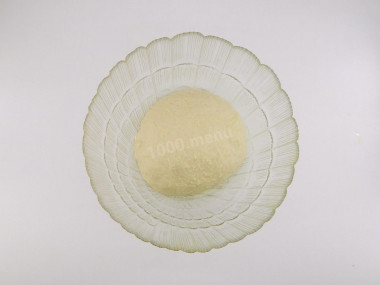
Knead the dough thoroughly. It should be soft, very tender and slightly stick to your hands. Lubricate the bowl and hands with vegetable oil. Form a ball from the dough, cover the bowl with cling film or a towel so that it does not dry and rises well. Leave in a warm place for about 2 hours. The time depends on the properties of the yeast and the conditions in which the dough will be located.
Step 7:
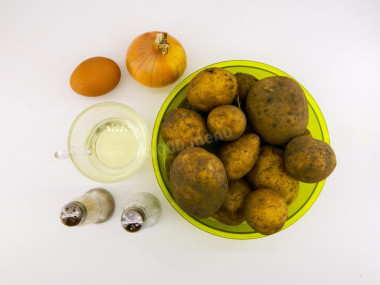
While the dough is coming, make the potato filling. Peel the potatoes from the peel and dirt, rinse well. Cut into small pieces of approximately the same size so that all the potatoes are cooked at the same time and quickly. Boil it until tender. It will take about 20-30 minutes, depending on the capabilities of your stove and the potato variety. There is no need to salt.
Step 8:
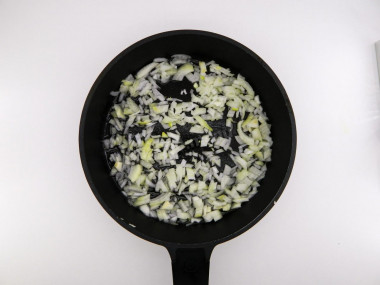
Peel, rinse and cut the onion into small cubes. Place in a frying pan and fry over medium heat for 3-4 minutes.
Step 9:
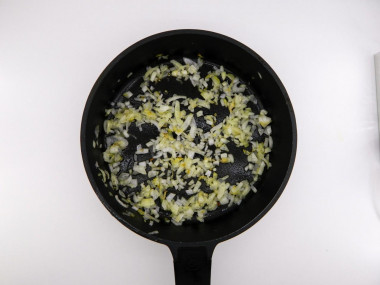
Fry until the onion is slightly golden brown.
Step 10:
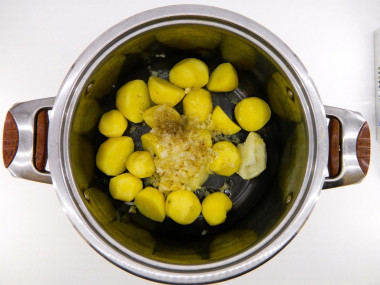
Drain all the water from the boiled potatoes. Add the fried onion, salt and pepper. Make mashed potatoes with a potato masher while the potatoes are still hot. It is better not to make puree with a blender, since it turns out to be heavy and very sticky. It will be hard to work with him.
Step 11:
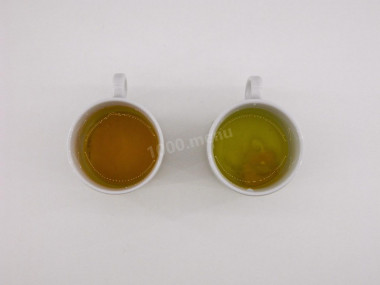
Wash the egg well, wipe dry with a towel and separate the white from the yolk. Leave the yolk for now, it will be useful for greasing pies (step 18).
Step 12:
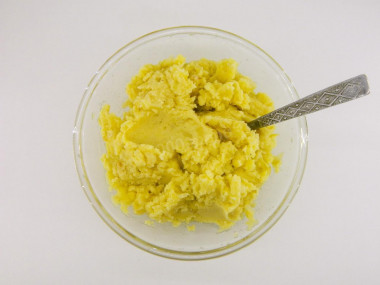
Transfer the filling from the pan to a bowl so that it cools down faster. Add the protein and mix thoroughly. Fill the pies only when the filling cools down, otherwise you can spoil the dough.
Step 13:
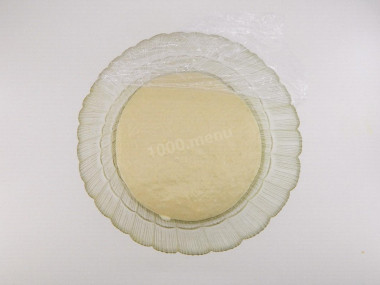
When the dough has increased 1.5-2 times in volume, it is ready and you can start working with it.
Step 14:
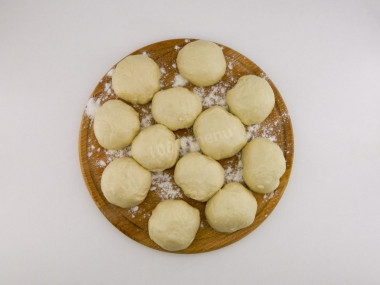
Separate 12 identical pieces from the dough, roll them into balls. Place on a horizontal work surface, sprinkled with flour. Turn the oven on 200 degrees so that it has time to warm up.
Step 15:
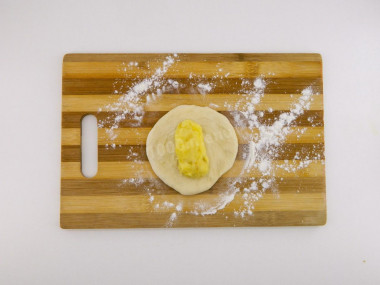
Shape the pies. Make pies by greasing your hands with butter or sprinkling with flour. Roll out the dough into a round layer 0.4-0.5 cm thick. In the middle, put the filling of an oblong shape.
Step 16:
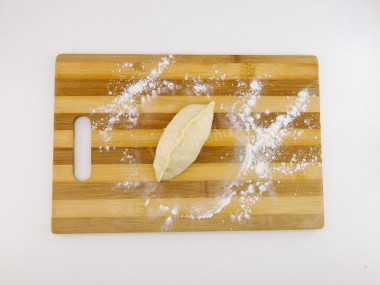
Pinch the dough all over the edge.
Step 17:
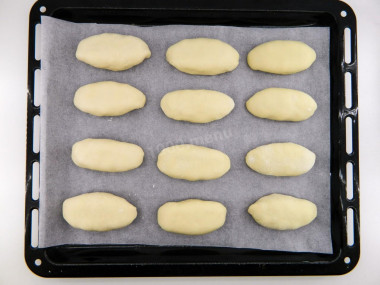
Spread the pies seam down on a greased baking sheet at a distance from each other. The baking sheet can be covered with parchment. If the parchment is not non-stick, grease it with oil so that the pies do not stick to the surface.
Step 18:
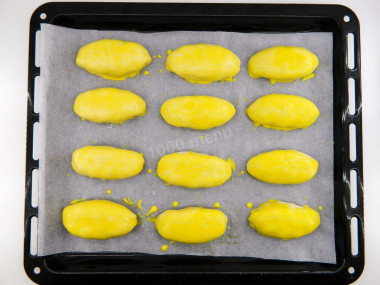
Grease the top of the pies with a mixture of yolk and sour cream and send the baking sheet into the oven. Bake for 20 minutes on the top-bottom mode. The finished pies will increase in volume and acquire a golden color.
Such pies are very good warm. They do not lose their freshness for tomorrow. The airy dough combined with a potato filling with onion will not leave anyone indifferent.
Keep in mind that everyone's ovens are different. The temperature and cooking time may differ from those specified in the recipe. To make any baked dish successful, use useful information about the features of ovens !
Make it a rule that the amount of flour is never determined in advance when preparing flour and bread products! This indicator will always fluctuate, since flour can be of different humidity, differ in the degree of grinding and the level of gluten, and other indicators, which inevitably affects its ability to bind to the liquid mixture in the dough. Since it is impossible to do a laboratory test at home to determine all the parameters and indicators of flour, we recommend acting on the principle of "flour in water", that is, take liquids exactly according to the recipe, and add flour to the liquid component not all at once, but in parts, achieving the desired consistency (while flour may take a little more or on the contrary, less than in the recipe). Thanks to this technique, the proportions of the ingredients are more accurately preserved and the quality of the dough is not lost.
Important! Using dry yeast, it should be borne in mind that they occur in two forms: active and instant (read the instructions carefully before use!).
Active dry yeast looks like beads or small balls. Before applying them, they must be brought out of "sleep mode". To do this, the active yeast is diluted in warm sweet water, milk or whey. The resulting bubbles, foam or "cap" indicate that the yeast is ready for further use. Active dry yeast must be brought to complete dissolution in the liquid, otherwise, due to the remaining grains, the dough may not rise and the baking will be spoiled (yeast grains that have not dissolved in the liquid and got into the dough will not disperse on their own, which means they will not work).
Instant dry yeast is easier to use. They do not need to be activated before use. Such yeast, along with other ingredients, is simply added to the dough. As a result, the baking time is reduced.
It should also be remembered that both types of dry yeast may differ in their activity from different manufacturers.
Caloric content of the products possible in the composition of the dish
- Ripe potatoes - 80 kcal/100g
- Baked potatoes - 70 kcal/100g
- Mashed potatoes - 380 kcal/100g
- Boiled potatoes - 82 kcal/100g
- Potatoes in uniform - 74 kcal/100g
- Fried potatoes - 192 kcal/100g
- Sour cream with 30 % fat content - 340 kcal/100g
- Sour cream of 25% fat content - 284 kcal/100g
- Sour cream with 20% fat content - 210 kcal/100g
- Sour cream of 10% fat content - 115 kcal/100g
- Sour cream - 210 kcal/100g
- Chicken egg - 157 kcal/100g
- Egg white - 45 kcal/100g
- Egg powder - 542 kcal/100g
- Egg yolk - 352 kcal/100g
- Ostrich egg - 118 kcal/100g
- Ground black pepper - 255 kcal/100g
- Granulated sugar - 398 kcal/100g
- Sugar - 398 kcal/100g
- Vegetable oil - 873 kcal/100g
- Salt - 0 kcal/100g
- Water - 0 kcal/100g
- Onion - 41 kcal/100g
- Wheat flour - 325 kcal/100g
- Dry yeast - 410 kcal/100g


